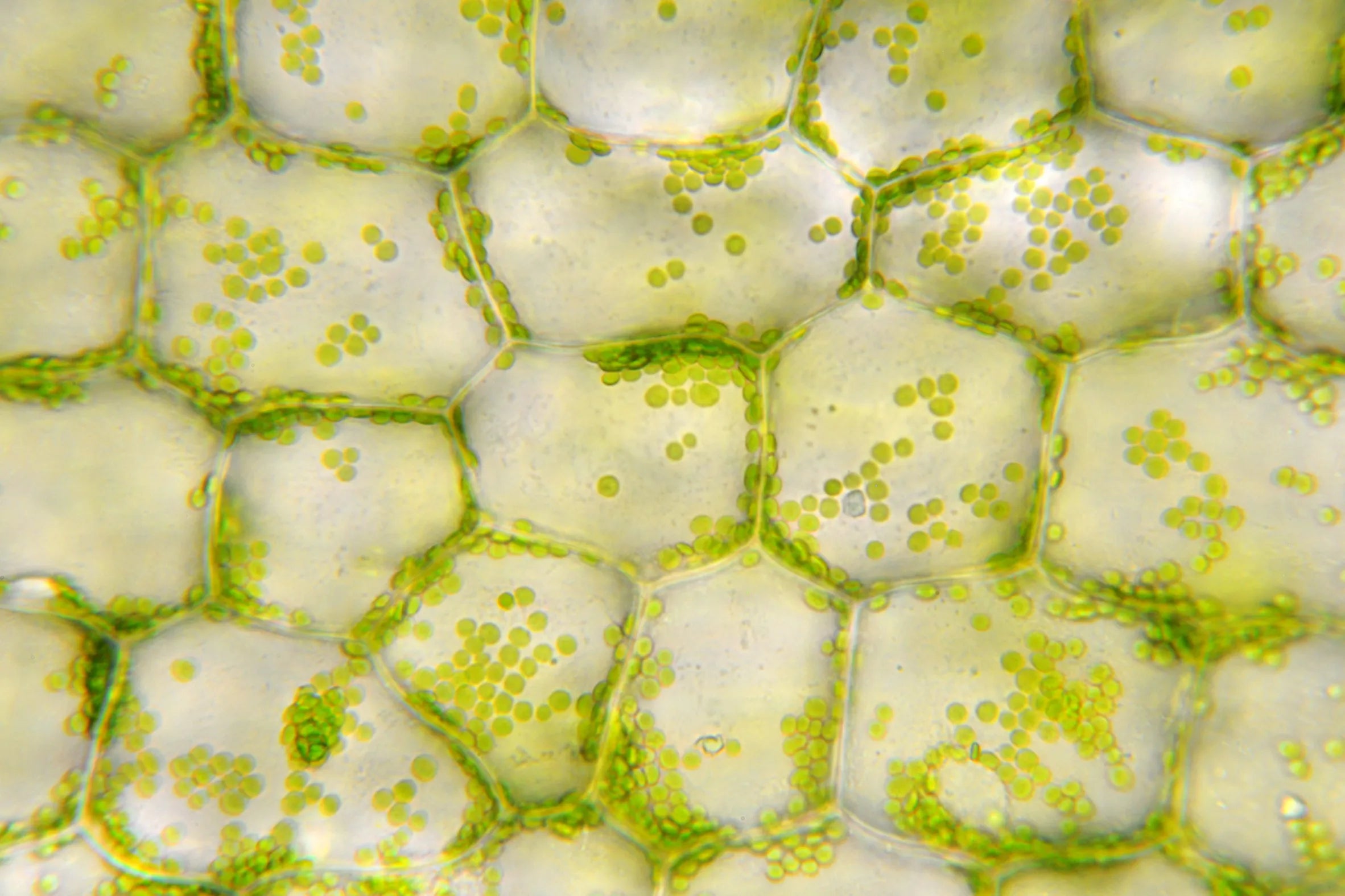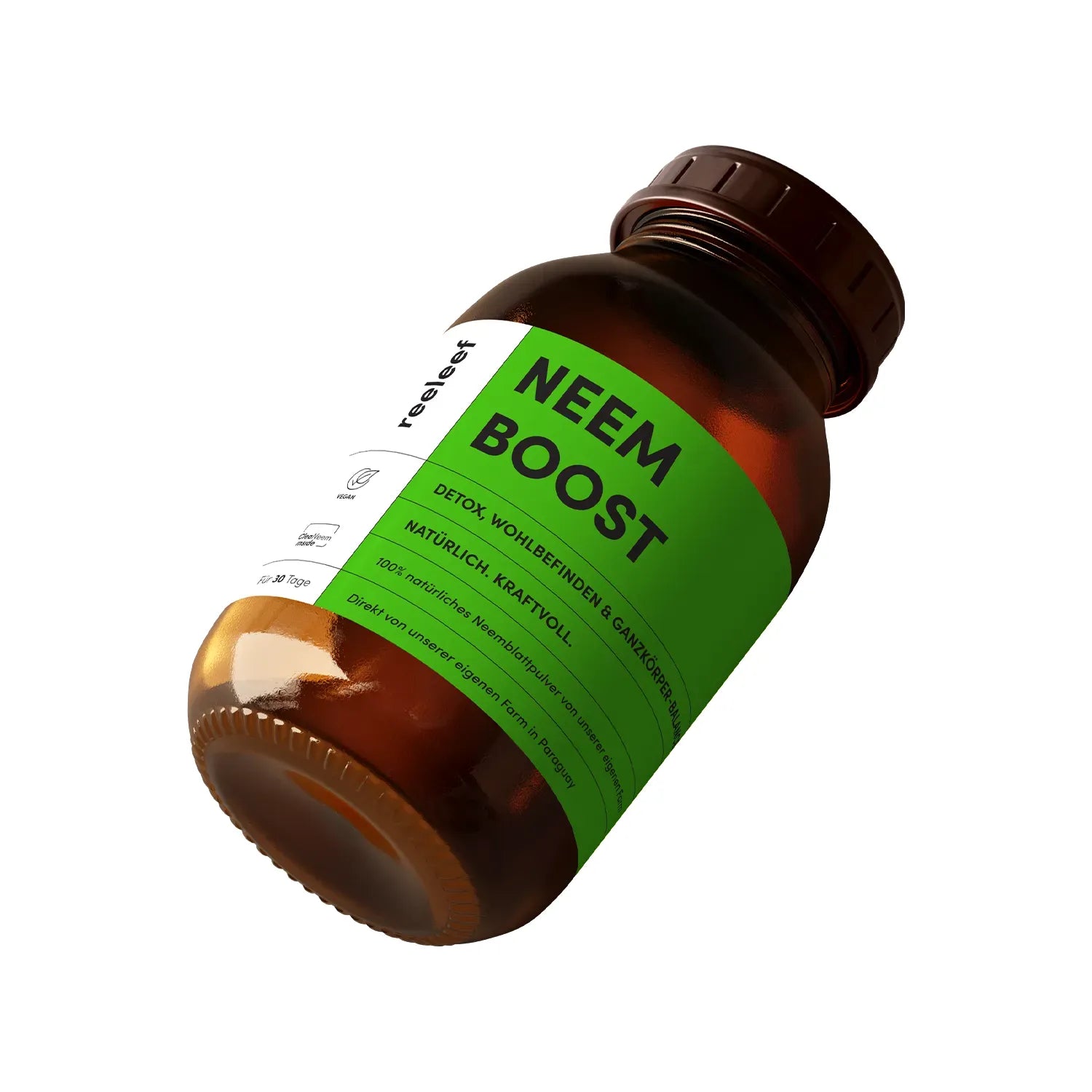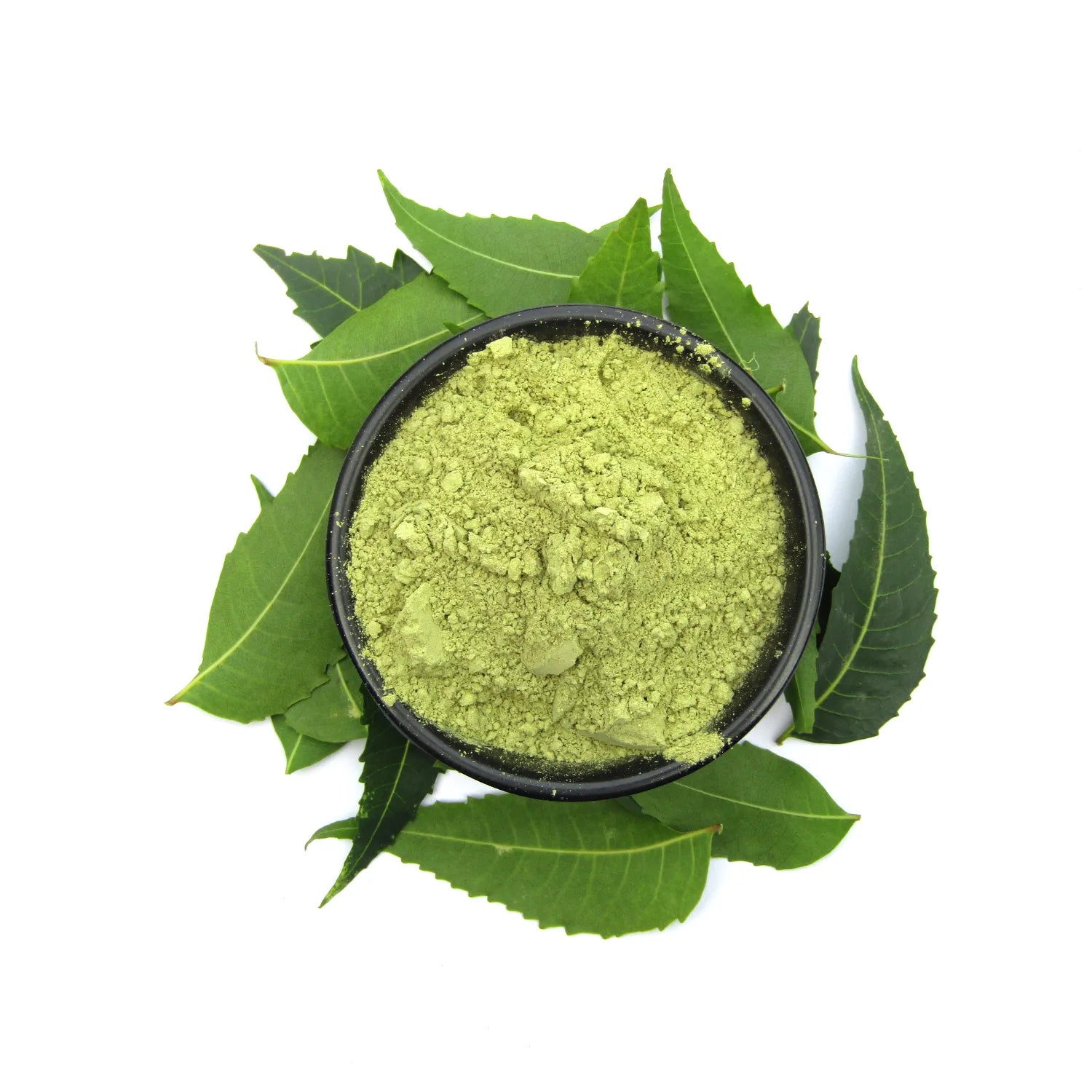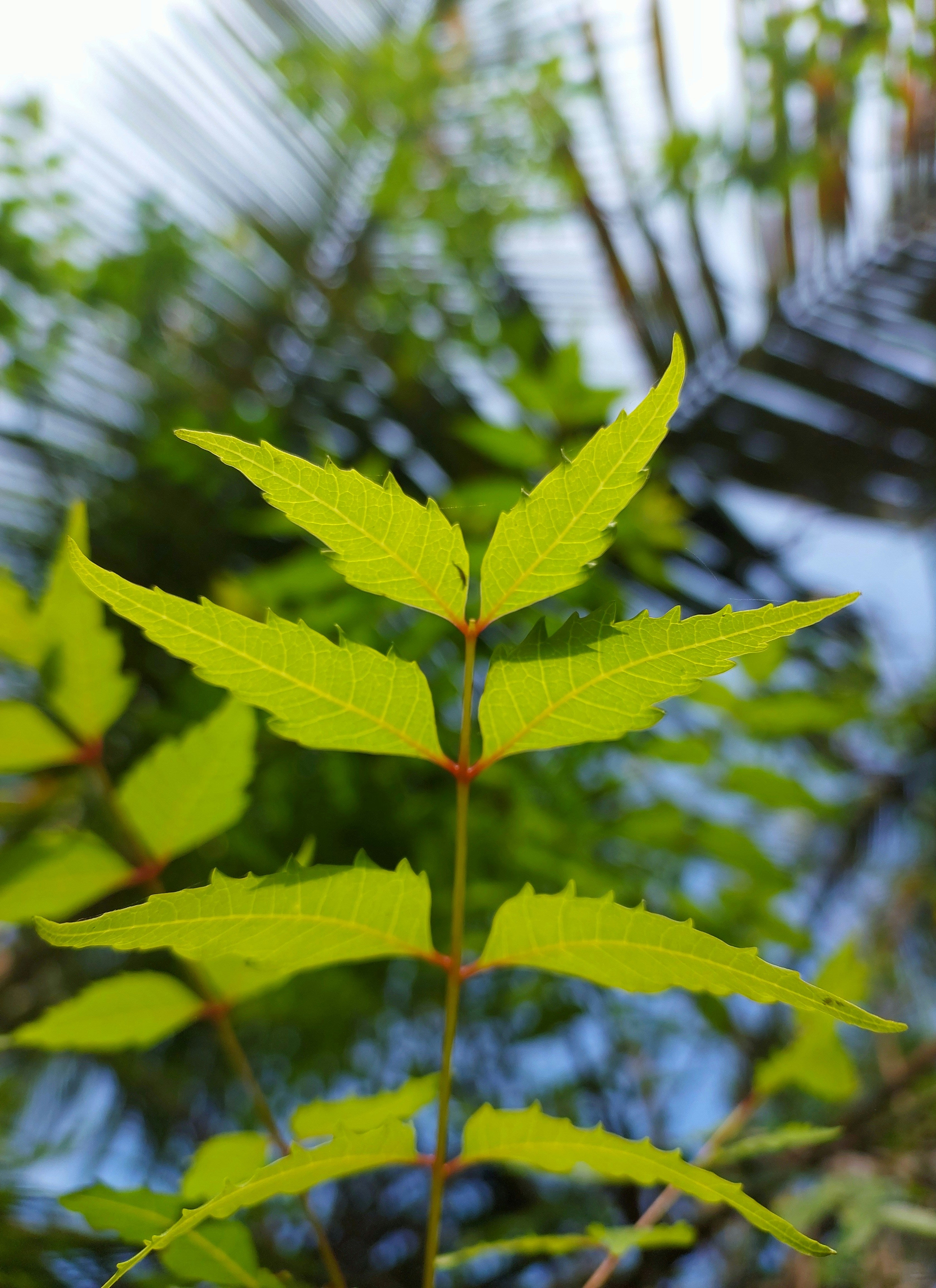Herkunft, Tradition & Bedeutung
Neem, auch bekannt als Azadirachta indica oder Niembaum,
 ist ein immergrüner Baum, der vor allem in Südasien beheimatet ist.
In der ayurvedischen Lehre wird Neem
ist ein immergrüner Baum, der vor allem in Südasien beheimatet ist.
In der ayurvedischen Lehre wird Neem
 seit Jahrtausenden als kraftvolle Pflanze zur inneren und äußeren Reinigung geschätzt. Seine Blätter, Samen und Rinde finden vielfältige Anwendungen – von Neem Kapseln
seit Jahrtausenden als kraftvolle Pflanze zur inneren und äußeren Reinigung geschätzt. Seine Blätter, Samen und Rinde finden vielfältige Anwendungen – von Neem Kapseln
 bis hin zu Neem Tee oder Hautpflegeprodukten. Der bittere Geschmack ist typisch – und ein Zeichen für die hohe Konzentration an Bitterstoffen.
bis hin zu Neem Tee oder Hautpflegeprodukten. Der bittere Geschmack ist typisch – und ein Zeichen für die hohe Konzentration an Bitterstoffen.




🔬 Unser Neem unter der Lupe – Qualität, Reinheit & Sicherheit
Reeleef steht für kompromisslose Qualität: Jede Charge wird laborgeprüft auf Schadstoffe, Keime, Pestizide und Schwermetalle.
Unsere Neem Kapseln enthalten ausschließlich reines Neemblattpulver – keine Füllstoffe und keine künstlichen Zusatzstoffe.
So kannst du dir sicher sein, dass du deinem Körper nur das Beste gibst.

🔍 Neem kaufen – Worauf du achten solltest
Nicht jedes Neem-Produkt hält, was es verspricht.
Achte auf:
- Transparente Herkunft: Woher kommt das Neem?
- Verarbeitung: Schonende Trocknung & Vermahlung
- Zutaten: Ist es wirklich 100 % reines Neem?
Bei Reeleef bekommst du volle Transparenz – von der Farm bis zur Kapsel.

♥ Warum Neem von Reeleef? – Das macht uns anders
Wir glauben an echte Pflanzenkraft – ohne Kompromisse.
- Reeleef steht für nachhaltigen Eigenanbau
- Fairness & Qualität statt Massenproduktion
- Reinheit durch Handarbeit und eigene Kontrolle
- Hochwertige Rezepturen auf wissenschaftlicher Basis
Unsere Neem Kapseln sind mehr als nur ein Produkt – sie sind ein Statement für Natürlichkeit, Verantwortung und Wirkung.

Häufige Fragen zu Neem
2 Kapseln täglich mit Wasser, ideal morgens vor dem Essen.
Sehr bitter – deshalb bevorzugen viele die Kapselform.
Wir empfehlen 30, 60 oder 90 Tage als Neem-Kur – je nach Ziel.
Laut Ayurveda wird Neem traditionell zur Reinigung und Balance eingesetzt – Erfahrungswerte zeigen positive Effekte auf Haut und Verdauung.

Jetzt Neem Boost Kapseln bestellen – pures Neem in Premiumqualität
Entdecke die Kraft des Neembaums: Neem Boost liefert dir reines Neemblattpulver – direkt von unserer eigenen Farm in Paraguay. Ohne Zusätze. Ohne Kompromisse. Ideal für deine tägliche Balance und Detox-Routine.
Deine Vorteile auf einen Blick:
🌱 100 % reines Neemblattpulver – 950 mg pro Tag
🧬 Traditionelle Pflanze. Moderne Rezeptur. Laborgeprüft.
🌍 Eigene Farm in Paraguay & faire Herstellung in der EU
🛡 Vegan, frei von Zusätzen & Füllstoffen
💚 Für deine tägliche Entgiftungsroutine & innere Reinigung
UNSER FARM
Núcleo 10, Ruta Transchaco casi llegando al Cuartel Pablo La Gerenca
9300 Dpto.Boquerón
Filadelfia, Paraguay



